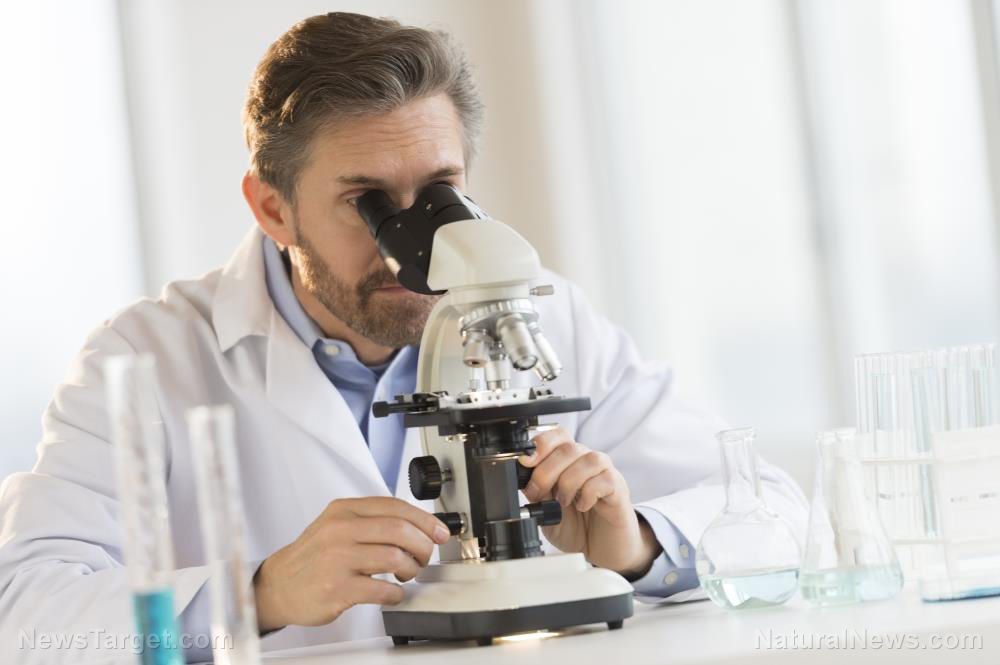Newfound cuckoo wasp species mimics other insects’ “language” to raise and feed its young
04/18/2021 / By Virgilio Marin

European researchers discovered a new species of cuckoo wasps in Norway’s Lista peninsula. The newfound species is nearly identical and behaves similary to another kind of cuckoo wasps, Chrysis brevitarsis, making it difficult to distinguish them from each other. Both are parasitic wasps that leech off other insects to feed their young.
In a paper published in the journal Insect Systematics and Diversity, the researchers detailed how they were able to identify the newfound species using the chemicals they emit to communicate.
Identifying new cuckoo wasp species
Cuckoo wasps have a beautiful jewel-toned exterior and are notorious kleptoparasites. This means that they lay their eggs in the nests of bees and other wasp species and let their offspring, which grow faster and hatch before the host’s eggs, after which they devour their “siblings” and the food provided by the host.
Insect experts find it difficult to identify the different species of these freeloading wasps because they look so similar. “Normally we distinguish insects from each other by their appearance, but cuckoo wasps are so similar to each other that it makes it difficult,” explained Frode Odegaard, one of the study researchers who teaches natural history at the Norwegian University of Science and Technology.
In the last decade, a method of species identification called DNA barcoding has allowed scientists to identify any variations in animals’ genetic material. But while it refined experts’ ability to study seemingly identical animals, it is not completely effective.
“In this case, we had two cuckoo wasps with microscopic differences in appearance and very small differences in DNA,” Odegaard said.
To that end, Odegaard and his team examined the pheromones emitted by specimens of Chrysis pseudobrevitarsis, another species of cuckoo wasps. Pheromones are chemical signals that animals of the same species use to communicate with each other. Even closely related species emit completely different pheromones to prevent interbreeding, or the mating between members of two different species. (Related: Planthoppers “shake their bodies” to attract their mates.)
Cuckoo wasps are able to camouflage through chemical mimicry, in which they produce the same pheromones emitted by their victims. “When you live as a parasite, it’s important not to be discovered, and therefore the cuckoo wasp has also learned the language of its host,” Odegaard explained.
Naming the newfound cuckoo wasp species
To give the newfound species a name, a naming competition was launched among European researchers who work on cuckoo wasps. Odegaard entered “Chrysis parabrevitarsis,” which translates to “the one standing next to brevitarsis,” because the species was so similar to C. brevitarsis. His entry received the most number of votes and the species was officially named “C. parabrevitarsis.”
“In a way, you place yourself in the perspective of eternity, because that species will always have that name. There’s something very fundamental about it,” Odegaard said of naming the cuckoo wasp.
He was also responsible for giving the species its common name “sporegullveps,” or “golden spore wasps.” He submitted the moniker because the cuckoo wasp has two identical spores on its middle tibia, or the fourth segment of an insect’s leg.
There is only a single known specimen of C. parabrevitarsis.
It was captured in Lista in southern Norway and is now housed in an insect collection. Odegaard assured that keeping one specimen has no negative impact on the insect’s population. As he explained, the size and quality of its habitat determine its survival, not whether researchers or predators nab a few insects.
Read more studies about animals and their amazing biology at Ecology.news.
Sources include:
Tagged Under: animals, biodiversity, chemical mimicry, cool science, cuckoo wasps, discoveries, Ecology, environment, insects, kleptoparasites, parasitism, pheromones, research, weird science, wildlife
RECENT NEWS & ARTICLES
COPYRIGHT © 2017 DISCOVERIES NEWS





















